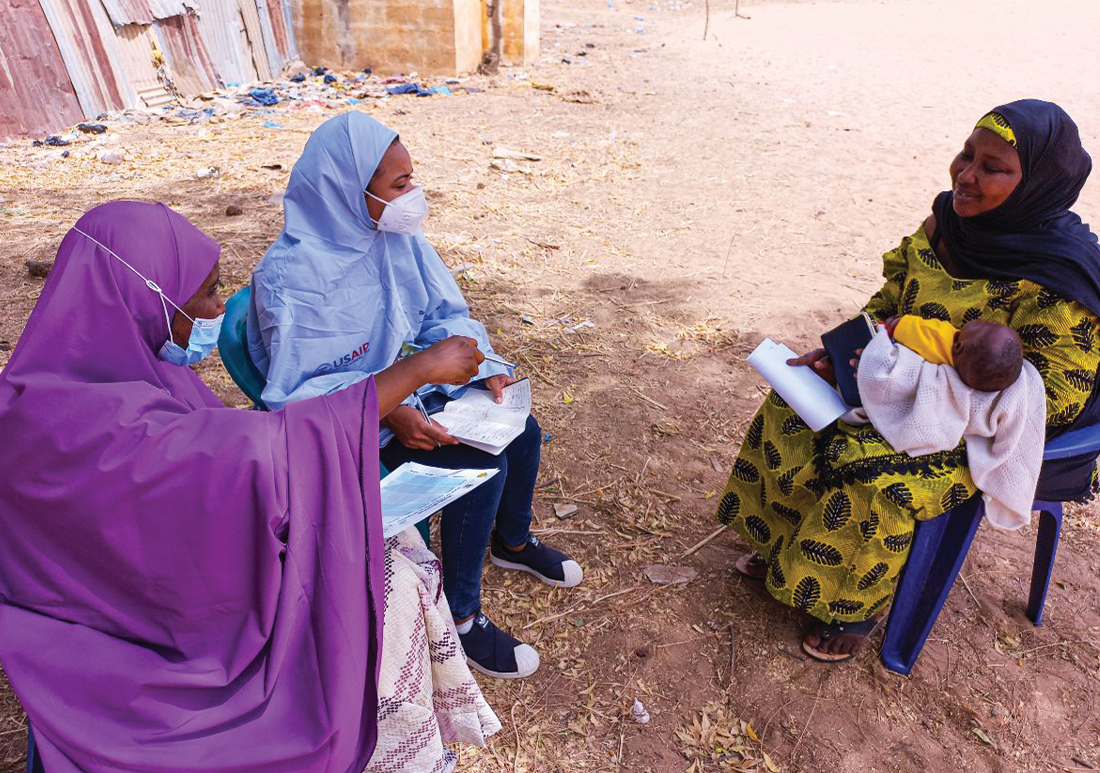
Breakthrough ACTION Nigeria and USAID Advancing Nutrition partnered with communities in Kebbi State to answer this question. Using a human-centered design (HCD) approach, the team aimed to develop tools with community health workers (CHWs) that are easy to use and build trusted connections with caregivers and their families.
Research with CHWs, caregivers, family members, and community members sought to better understand child feeding challenges from their perspectives. With these insights, Breakthrough ACTION’s partner, ThinkPlace, guided an iterative design and test process resulting in a set of simple tools for CHWs to transform the way they interact with caregivers and fellow community members around this topic.
Nourishing Connections, the new CHW job aid, has four linked components:
- Empathways opening: Creates an empathic counseling session, shifting the experience of care so that caregivers feel confident communicating their needs and trust CHW advice.
- Assessment: Questions to help CHWs and caregivers understand the current situation.
- Counseling flow: Actively enables CHWs to focus on one to two topics most relevant for the caregiver at that time.
- Action plan: Asks caregivers to identify specific steps they will take between counseling sessions.
The “Empathways” opening does not use the usual questions to start a session. This simple, but effective opening is inspired by Empathways and Sharing Histories in Peru, which found that when the CHW and caregiver share some personal information that is not about the immediate issue, they begin to build trust and connection. This also helps reduce the power imbalance between the perceived expert and the person being counseled, which further fosters compassionate care. The use of this technique in Nigeria yielded an immediate change:
“That was the first time I was asked something during the session, and that is the first session that I think I will remember what was said.” — Caregiver
“It has never been so easy to talk to them. In fact, they talked a lot.” — CHW
“This tool made my session faster, because I know what I have to talk to them about. This is by far my favorite tool”. — CHW
The job aid includes interactive and engaging support tools for home visits and community activities: trivia, a card game, and a price comparison.
In this webinar, Breakthrough ACTION Nigeria and USAID Advancing Nutrition shared the job aid and tools developed using human-centered design. They also featured the Infant and Young Child Feeding (IYCF) Digital Image Bank.
Breakthrough ACTION Nigeria will orient CHWs to help them become confident in the use of this job aid and the supporting tools. Nutrition programs can test any of these game-changing elements in their own activities to develop tools that CHWs want and need to create effective nutrition counseling sessions.
What is Human-Centered Design?
Human-centered design (HCD) is a creative approach to designing local solutions. It fosters innovation, prioritizes learning, and puts people at the center of public health solutions. HCD leverages tools and processes to help people think about problems and their solutions differently.